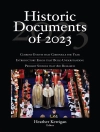Using the latest FBI crime statistics, City Crime Rankings 2015 provides easy-to-understand crime comparisons for cities and metropolitan areas throughout the United States. Numbers, rates, and trends for total crime, violent crime, murder, rape, robbery, aggravated assault, property crime, burglary, larceny-theft, and motor vehicle theft are presented in both alphabetical and rank order for all metro areas and cities of 75, 000 or more. Numbers and rates of police in cities are also included. A revised introduction gives a summary of and notes about the data, as well as the methodology behind the overall rankings allowing researchers to cite statistics with context.
City Crime Rankings offers thorough and accurate statistics for more than 380 metropolitan areas and nearly 450 cities, featuring:
- Methodology
- Distribution Analysis
- Notes Regarding City and Metro Crime Data
- 2014 Metropolitan Crime Rate Rankings
- 2014 City Crime Rate Rankings
- Metropolitan Area and City Crime Statistics
- Metropolitan and City Populations
Table of Content
Detailed Table of Contents
Introduction
Methodology
Distribution Analysis
Notes Regarding City and Metro Crime Data
2014 Metropolitan Crime Rate Rankings
2014 City Crime Rate Rankings
Subject Rankings
Metropolitan Area Crime Statistics
City Crime Statistics
Metropolitan and City Populations
Appendix
Descriptions of Metropolitan Areas in 2013
County Index: 2013
National Crime Trends: 1994 to 2013
National, Metropolitan and City Crime Statistics Summary: 2013
About the author
Rachel Boba Santos is a professor at Radford University in the Department of Criminal Justice. She works with police departments and crime analysts. She conducts experimental and applied research on place-based and offender-based police crime reduction strategies, stratified policing, crime analysis, community engagement, and police use of force.Dr. Santos′ interests include conducting practice-based research which is implementing and evaluating evidence-based practices in the “real world” of criminal justice. In particular, she seeks to improve crime prevention and crime reduction efforts by police in areas such as crime analysis, problem solving, accountability, as well as leadership and organizational change. She and Dr. Roberto Santos co-created Stratified Policing which is an organizational model for systemizing proactive crime reduction strategies in police departments. Other areas of research include police/researcher partnerships, police/community collaboration, hot spot and problem-oriented policing, predictive policing, environmental criminology, crime and place, police/crime data and technology, experimental research methodology, and program evaluation.












